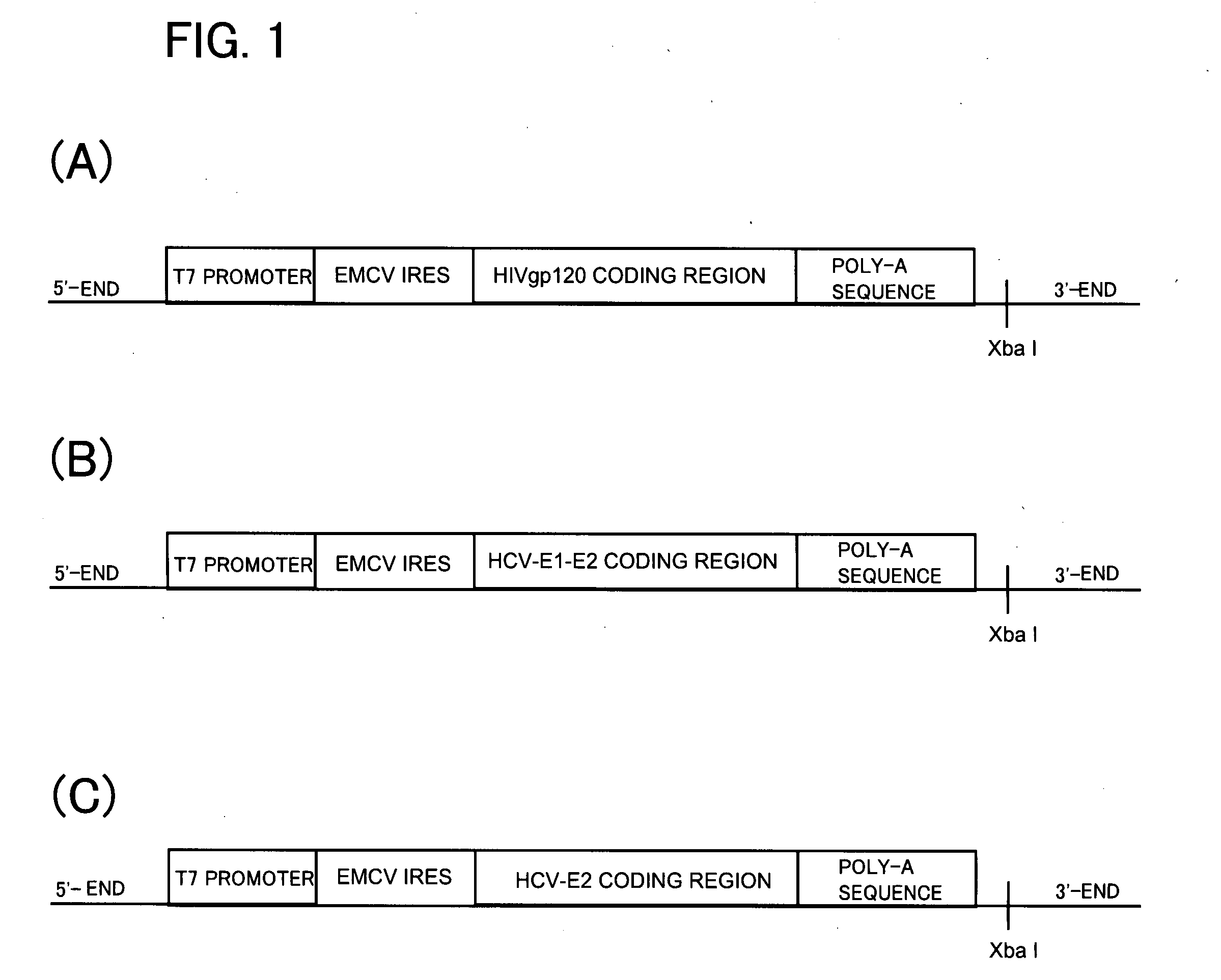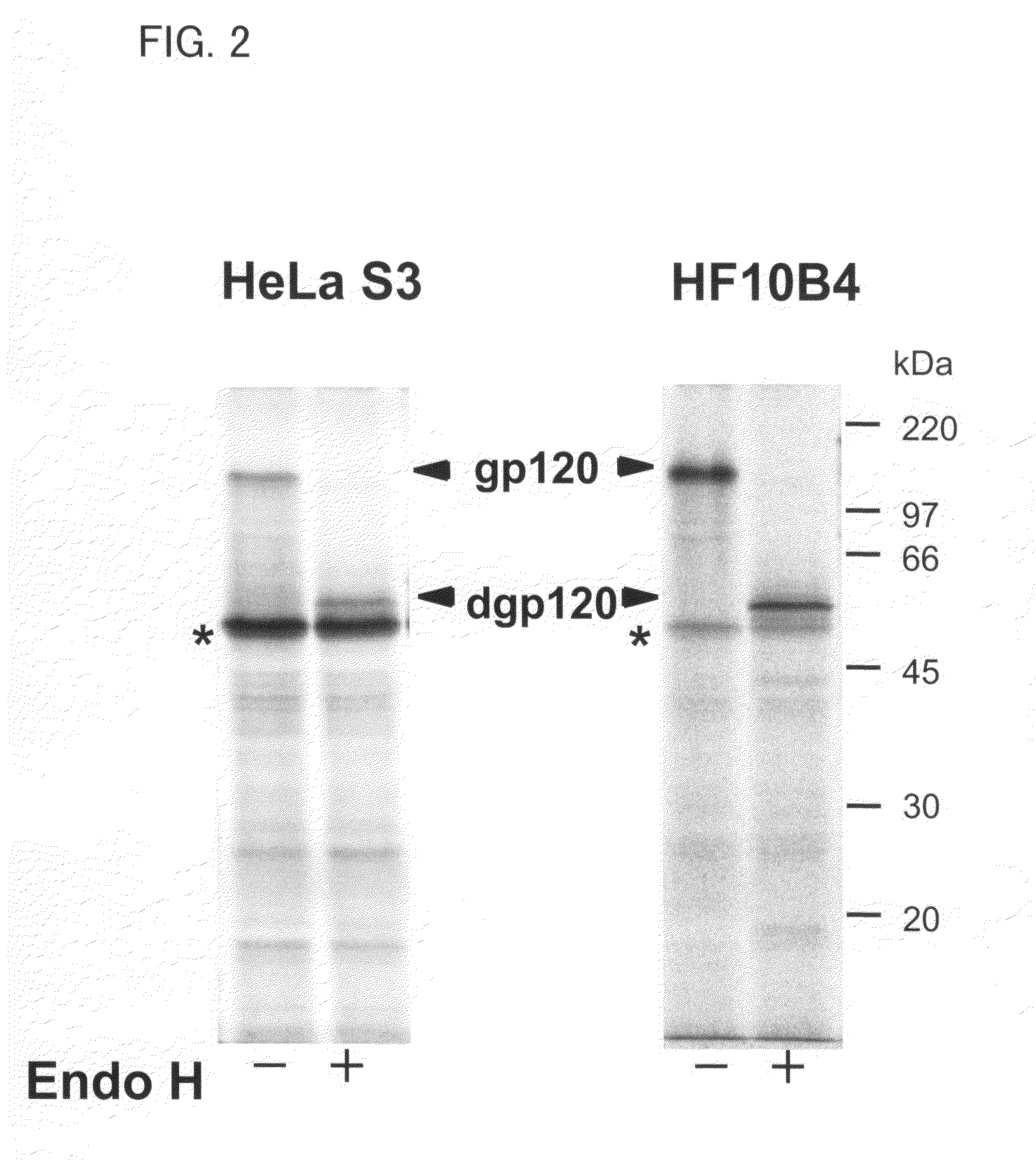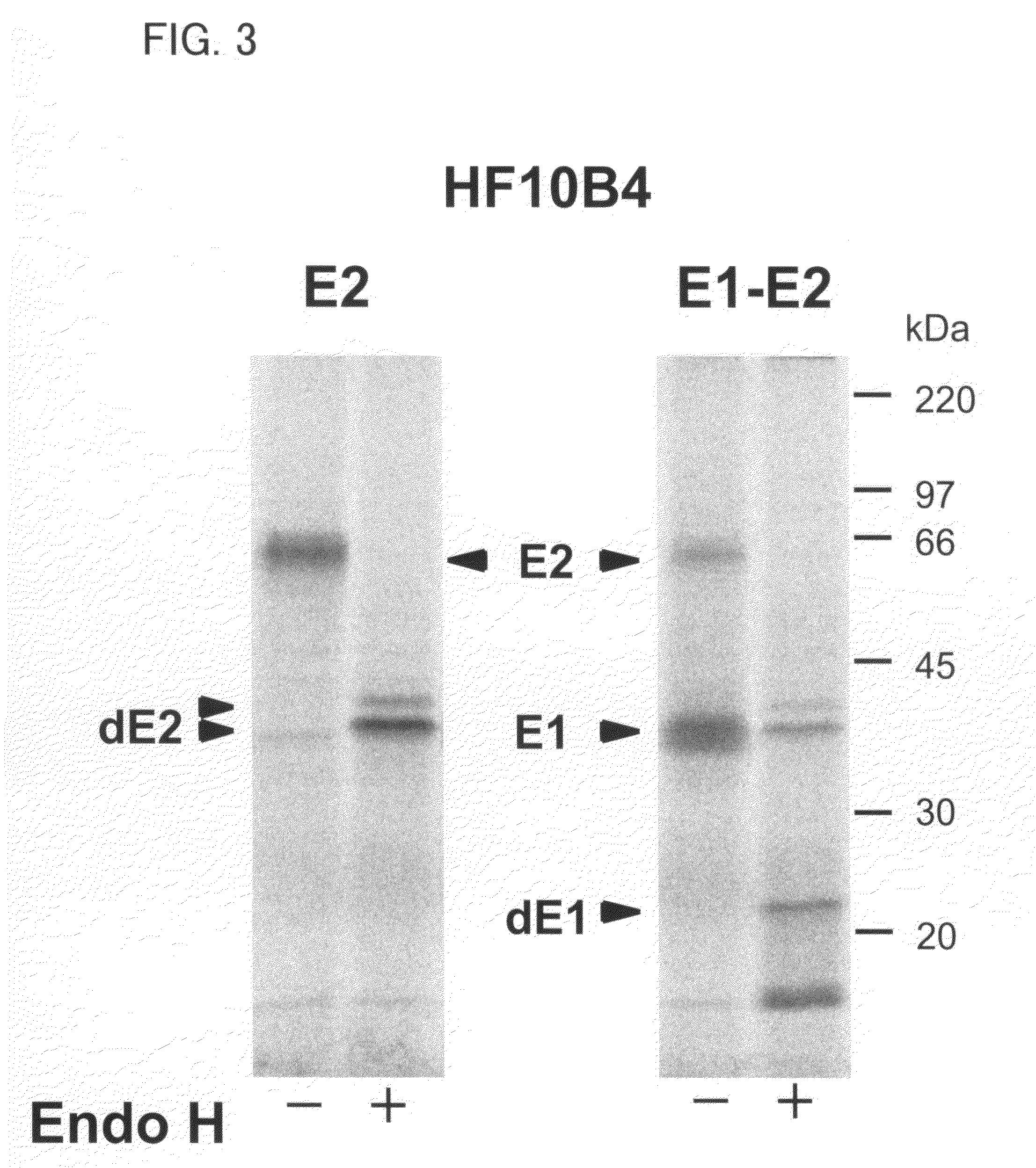Cell-free protein synthesis system for synthesizing glycoprotein
a cell-free protein and glycoprotein technology, applied in the direction of fertilization, etc., can solve the problems of time-consuming and labor-intensive preparation of post-translational modification machineries, defective components, etc., and achieve the effect of improving protein secretion activity, easy preparation of extracts, and convenient use in large-scale cultivation
- Summary
- Abstract
- Description
- Claims
- Application Information
AI Technical Summary
Benefits of technology
Problems solved by technology
Method used
Image
Examples
examples
[0032]The present invention is explained in more details by reference to the following examples using a human hybridoma cell line HF10B4, however these examples are typical concrete cases and do not intend to limit the scope of the present invention.
[Cell Culture]
[0033]The culture of HF10B4 cells (RIKEN BioResource Center, Cell No. RCB0708) using a Petri dish was carried out in a CO2 incubator (5% CO2 concentration, at 37° C.), in E-RDF medium (KYOKUTO) supplemented with 10% heat-inactivated fetal calf serum (ICN Biomedicals, Inc.) and L-glutamate (2 mM).
[0034]The spinner culture in one-litter scale was performed using a spinner flask equipped with a cell culture controller system (Cell Master Model 1700, WAKENYAKU Co., Ltd.). The control values of temperature, pH, dissolved oxygen concentration, and stirring speed were 37° C., 7.0, 6.7 ppm, and 20 rpm, respectively.
[0035]The culture of HeLa S3 cells using a Petri dish was also carried out in a CO2 incubator (5% CO2 concentration, a...
PUM
 Login to View More
Login to View More Abstract
Description
Claims
Application Information
 Login to View More
Login to View More - R&D
- Intellectual Property
- Life Sciences
- Materials
- Tech Scout
- Unparalleled Data Quality
- Higher Quality Content
- 60% Fewer Hallucinations
Browse by: Latest US Patents, China's latest patents, Technical Efficacy Thesaurus, Application Domain, Technology Topic, Popular Technical Reports.
© 2025 PatSnap. All rights reserved.Legal|Privacy policy|Modern Slavery Act Transparency Statement|Sitemap|About US| Contact US: help@patsnap.com



